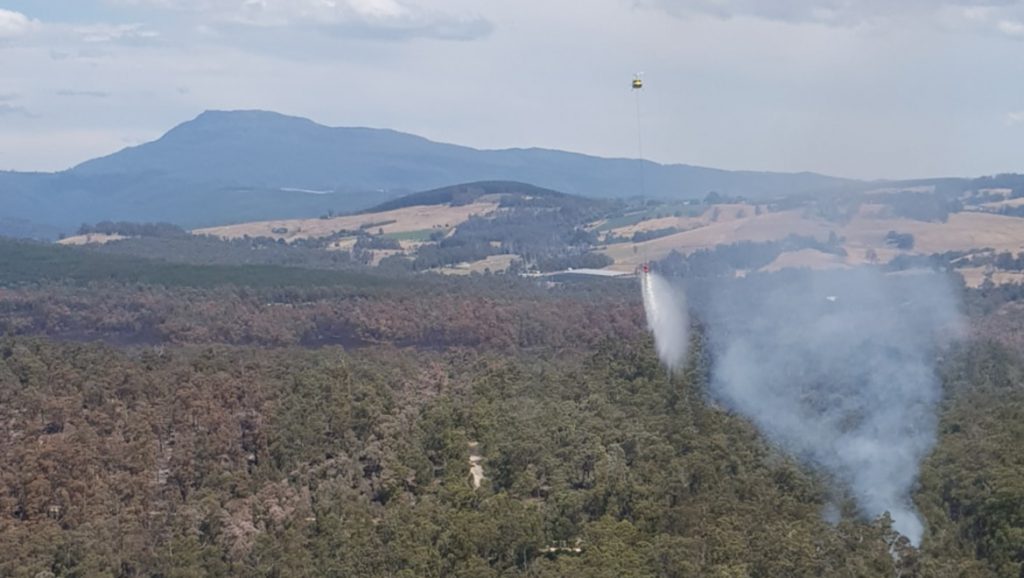
Tasmanian fire commanders were in the air as they watched a UH-1H helicopter crash in front of them while tackling a major bushfire, killing a 41-year-old pilot.
The supervising crew had tasked the fellow aircraft with dropping water on a blaze hotspot, before witnessing the helicopter miss its target and subsequently hit the ground.
The information was contained in an ATSB preliminary report into the incident that took place 40 kilometres north of Launceston on 14 February.
“It is important to note that this preliminary report details factual information established in the investigation’s early evidence collection phase, but it does not detail analysis or findings, which will be outlined in the investigation’s final report,” the ATSB’s director of transport safety Stuart Macleod said upon the report’s release.
The early report detailed how the crew of an air attack helicopter (an Airbus AS350 registered VH-RLR) that was monitoring the Labrina fireground had tasked the UH-1H to conduct a water drop on a small hotspot
After the second helicopter – registration VH-UHX – filled its underslung water bucket at a nearby dam, the air attack crew subsequently observed it conduct a water drop that missed the target, before commencing a gradual left turn and track away from the staging area.
Suspecting the UHX’s pilot was encountering an in-flight difficulty and wanting to avoid any potential conflict with the approaching helicopter, the air attack pilot initiated a climbing 360-degree turn.
After completing the turn, the air attack pilot trailed the UHX and observed the helicopter descend toward an open paddock where it impacted the ground.
A witness at the staging area, meanwhile, also observed the UHX miss the hotspot when releasing its water load, before it commenced a descending profile, entered a hover and then rapidly yawed twice, before descending from view below the tree line.
The pilot sustained fatal injuries in the accident and the helicopter was destroyed from impact forces and a fuel-fed fire.
Analysis of the accident site by ATSB transport safety investigators established that the helicopter had impacted the ground along a westerly flight track. Ground scars at the site showed that the tail section made first contact with the ground, followed by the skids, main rotor blades and the cabin.
The helicopter’s tail section, including the tail rotor gearbox, had separated from the fuselage, and had come to rest a short distance from the main wreckage. The bucket and line, meanwhile, had been released from the helicopter prior to the ground impact and were positioned approximately 300 metres from the wreckage.
“As the investigation progresses, the ATSB will continue to analyse the flight profile, further examine helicopter components including the engine, transmission and tail rotor gearbox, consider witness accounts and analyse accident imagery and video footage,” said Macleod.
The investigation will also give consideration to the helicopter’s performance, maintenance and operational history, emergency procedures, and pilot qualifications, medical history and experience.
Macleod noted a final report will be published at the conclusion of the investigation.
“However, should a critical safety issue be identified at any time during the investigation, the ATSB will immediately notify relevant parties so they can take appropriate and timely safety action.”
















MERVYN CROWE
says:How absolutely dreadfully sad indeed, man and machine out doing good.